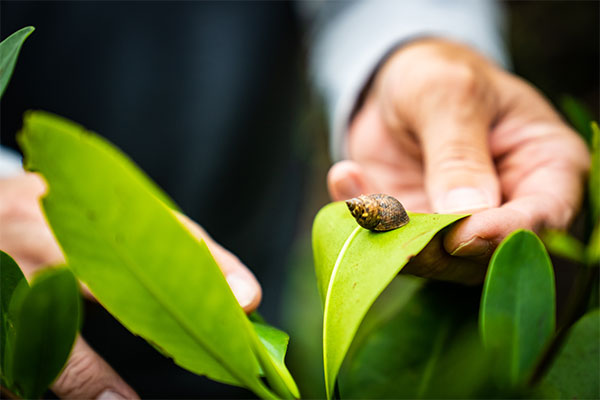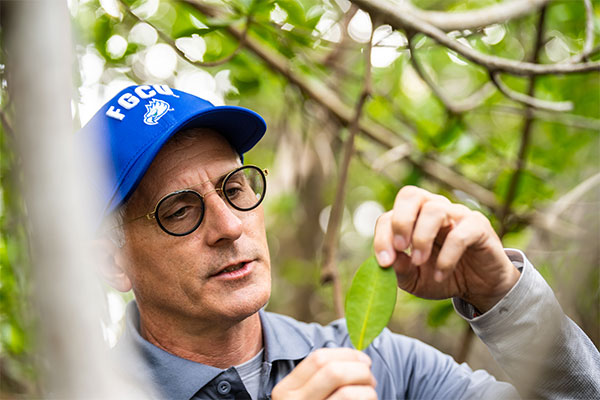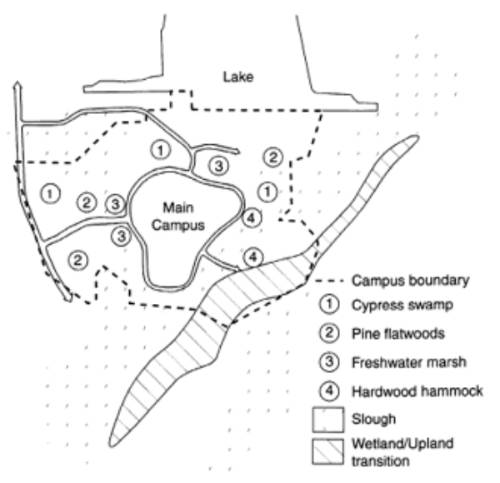Florida Gulf Coast University's Campus Ecosystem Model (CEM)
A model for undergraduate education whereby the university campus serves as a focus for the study of the entire watershed within which it is situated from its freshwater origins downstream to the Gulf of Mexico.

What is the CEM?
- Draws attention to the exchange of information between organisms and their environment
- Tracks matter and energy through the campus ecosystem
- Explores the linkages that exist between the campus and other ecosystems via the import and export of the above properties.
The CEM increases the scale and significance of this approach by emphasizing that the university itself is situated within an ecosystem and is both influenced by and influences this system.
About The CEM
The CEM represents a deliberate linking of the curriculum to tangible environmental issues within the learner’s own backyard provides a genuine foundation in the discipline and reinforces basic principles and problem-solving techniques.
The model not only affords students with hands-on, real-world experience in the discipline of their choosing, but also integrates discipline-based frameworks by linking multiple courses. Such interdisciplinary approaches, emphasizing research experience as well as active, collaborative learning, have been endorsed by both science educators and national science organizations. Learn More


FGCU's Watershed
-
What is a Watershed?
Toggle More Info -
Online Resources
Toggle More Info
Explore Degree Programs
Undergraduate Programs
Graduate Programs
Minors
